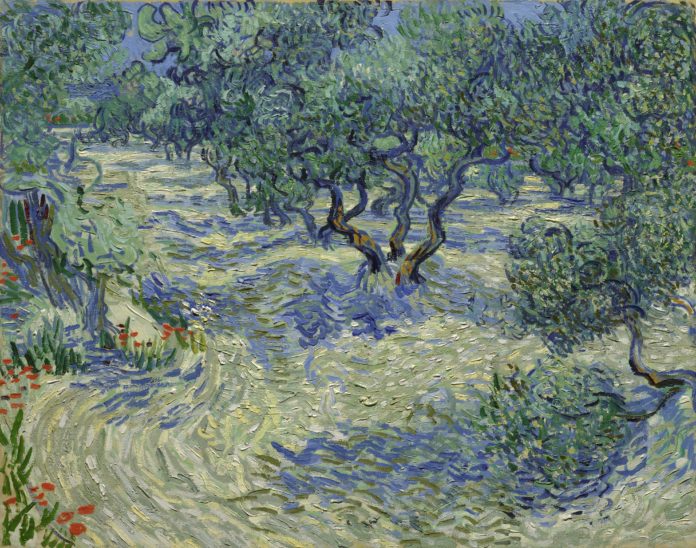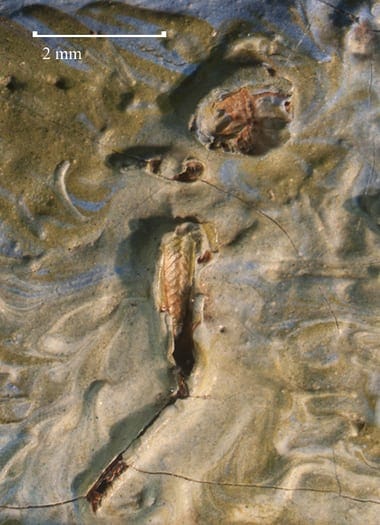
An art conservator at the Nelson-Atkins museum of art in Kansas City made waves around the art world after she alerted curators that, as she examined Vincent van Gogh’s 1889 “Olive Trees” with a microscope, she had found something extraordinary.
Since plein air painting began, artists have had to overcome lots of obstacles. Sometimes the weather doesn’t cooperate or, even if it does, it might be sunny and 100 degrees … or -10 degrees. What about that moose charging toward your easel? Or simply having to hike all that gear to your destination? Whatever it may be, working outdoors has advantages and disadvantages, and Vincent van Gogh was not an exception to these rules.
What is Plein Air Painting? Click here for a free eBook with 240 plein air tips!
Last week at the Nelson-Atkins Museum in Kansas City, a conservator was having a look around an 1889 picture of olive trees by Van Gogh and discovered something extraordinary embedded into the century-old paint: a grasshopper. Mary Schafer, who spotted the bug, said, “Looking at the painting with the microscope … I came across the teeny-tiny body of a grasshopper submerged in the paint, so it occurred in the wet paint back in 1889. We can connect it to Van Gogh painting outside, so we think of him battling the elements, dealing with the wind, the bugs, and then he’s got this wet canvas that he’s got to traipse back to his studio through the fields.”

Sound familiar? In his famous letters to his brother Theo, Van Gogh often remarked about the challenges of plein air work, at one point writing, “I must have picked up a few hundred flies and more off the 4 canvases that you’ll be getting, not to mention dust and sand … when one carries them across the heath and through hedgerows for a few hours, the odd branch or two scrapes across them.”
Believe it or not, the discovery of the historic plein air pest might actually yield some important artistic information. Apparently, a study of the insect could help researchers identify the season or time of year that Van Gogh completed the work.
Paleo-entomologist Michael Engel from the University of Kansas was approached to examine the grasshopper further. Engel discovered that the insect’s thorax and abdomen were missing, and that since there was no sign of movement in the surrounding paint, the grasshopper was dead and desiccated when it somehow landed on the artist’s wet canvas. Regardless of the lack of historical significance of the discovery, the museum has acknowledged that the grasshopper has become somewhat of a must-see for museumgoers. Visitors have been seen peering closely at the painting in search of the pest, some more successfully than others.
This much can be sure — I’ll certainly be in search of the art world’s most famous grasshopper during my next visit to the Nelson-Atkins. To learn more, visit here.
by Andrew Webster (originally published November, 2017)
Upcoming travel and art events with Streamline Publishing:
> Click here to subscribe to the free newsletter, Plein Air Today
> And click here to subscribe to PleinAir Magazine so you never miss an issue!
> NEW! GET YOUR WORK FEATURED IN PLEIN AIR TODAY




Great article! I can’t believe how thick that paint is?